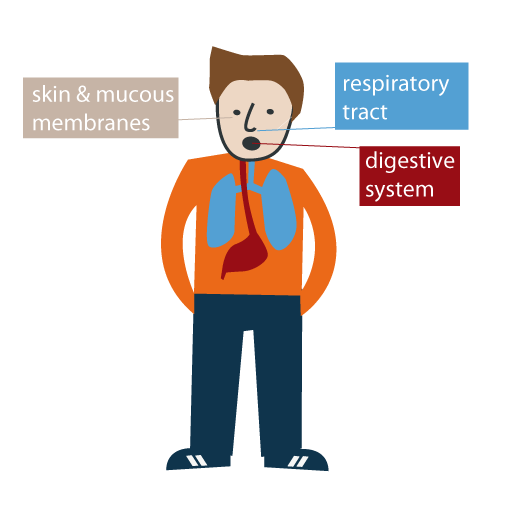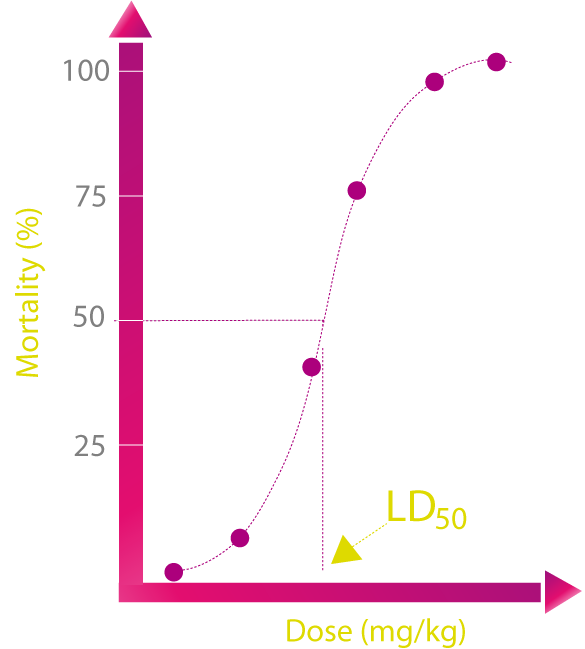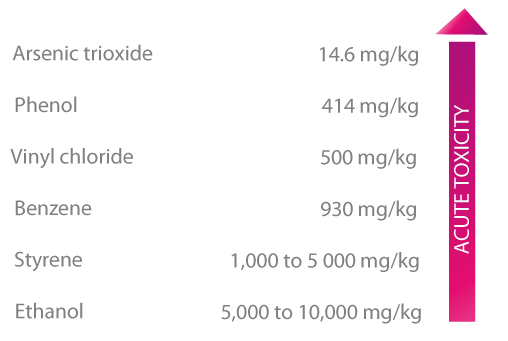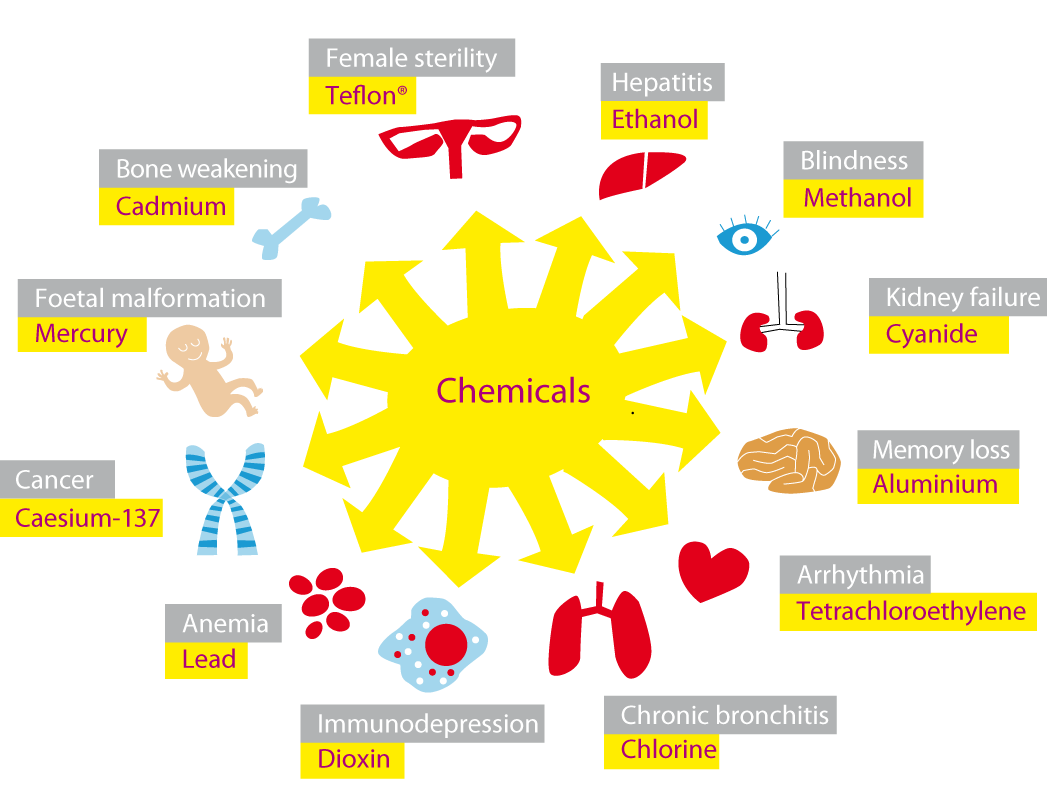
Chemicals can enter the body in three different ways: via the skin and mucous membranes• (contact), the respiratory tract (inhalation) or the digestive system (ingestion).

On average, in human beings, the total surface area of the skin is 2 m², that of the pulmonary alveoli is 130 m² and that of the intestines is 250 m² (equivalent to a tennis court).
The toxicity of a substance is its capacity to generate noxious effects on health. Chemicals do not all have the same toxicity. Some must be absorbed in large quantities to cause intoxication while for others, small quantities are sufficient. Toxicity is closely linked to the quantity of the substance involved and the exposure time.
The term acute toxicity is used when noxious effects on health appear rapidly following sudden exposure to relatively high concentrations of a chemical. This may typically be the case of shipping accidents.
Inversely, the term chronic toxicity is used when noxious effects on health are caused by repeated exposure, day after day, for many years, to low concentrations of a chemical. This is what happened in the case of the Minamata tragedy in Japan.
In the 15th century, Paracelsus, a renowned Swiss doctor, wrote: "Poison is in everything, and no thing is without poison. The dosage makes it either a poison or a remedy.”
In the case of acute intoxication, the effects may be restricted to a specific area or organ, or may affect the entire body.
Local effects are directly connected to the way in which the toxic product enters the body:
Generalized effects can include severe cardiac, respiratory, and central nervous system conditions which can, in certain cases, lead to death.
To better understand what is meant by heavy metal toxicity and see some examples of the symptoms caused by the most commonly encountered metals, visit the website: http://emedicine.medscape.com/article/814960-overview
In the case of chronic intoxication, the effects often appear after several years, or even several dozen years.
Most of the time, this results in the development of severe, chronic pathologies.
The acute toxicity of a substance is quantified using a value known as the median lethal dose (LD50) which is the dose of a substance that will kill 50% of a given population (often mice or rats) in specific experimental conditions. It is expressed in milligrams of a substance per kilogram of animal body mass (mg/kg).

In the case of a gas or liquid, the median lethal concentration (LC50) is calculated and expressed in milligrams per litre (mg/L) or parts per million (ppm).
By comparing the LD50 and LC50 of several chemicals, it is possible to rank them from most to least toxic. However, these values are today highly controversial due to the reliability of certain studies, preventing the comparison of different substances from the point of view of their acute toxicity.

Chronic toxicity remains, at present, difficult to assess, as it is not easy to prove the link between the effects observed and the, sometimes long-past, exposure. The studies conducted on this question call upon various disciplines (immunotoxicology, cancerology) and can last several months or years.
Complementary studies can be conducted on bacterial populations, which reproduce very quickly. This has the advantage of providing rapid results, but that must be extrapolated to obtain valid data for humans.
A toxicological threshold value is the minimum concentration of a substance that causes a negative effect, that may be of varying severity, on a human population for a given exposure time. It is the result of the extrapolation of data obtained from experiments on animals to humans.
There is no globally harmonized system of toxicological threshold values. Many countries have therefore developed specific tests and use their own values.
The World Health Organization, in collaboration with the United Nations Environment Programme and the International Labour Organization, have published an education and public awareness document entitled “Guidelines on the Prevention of Toxic Exposures” which can be downloaded from: www.who.int/ipcs/features/prevention_guidelines.pdf
The Emergency Response Planning Guidelines (ERPG) apply to the general population. They were established in 1988 by the American International Hygiene Association (AIHA) based on a one-hour exposure time. They represent the maximum concentrations below which a category of effects is not expected.
